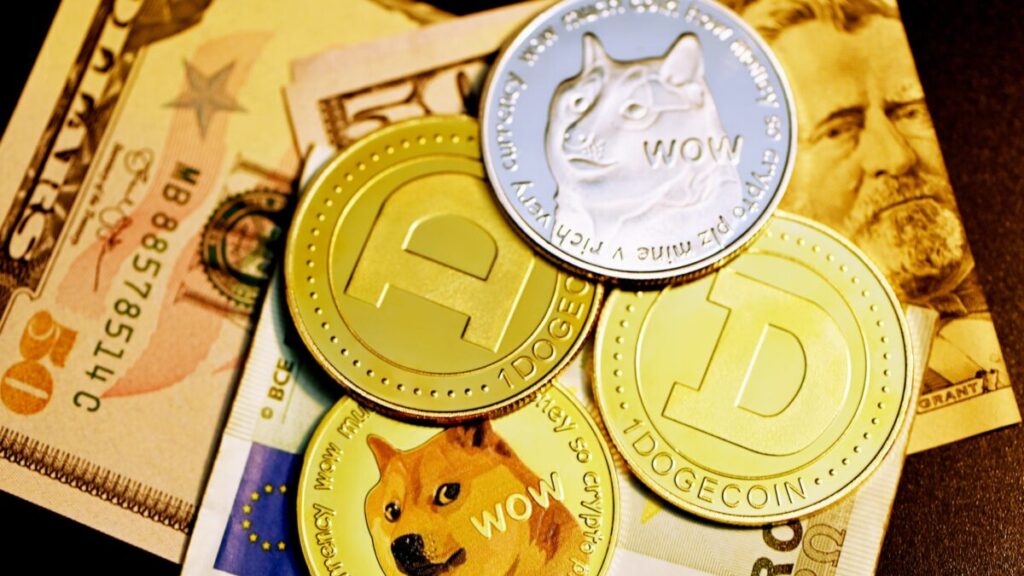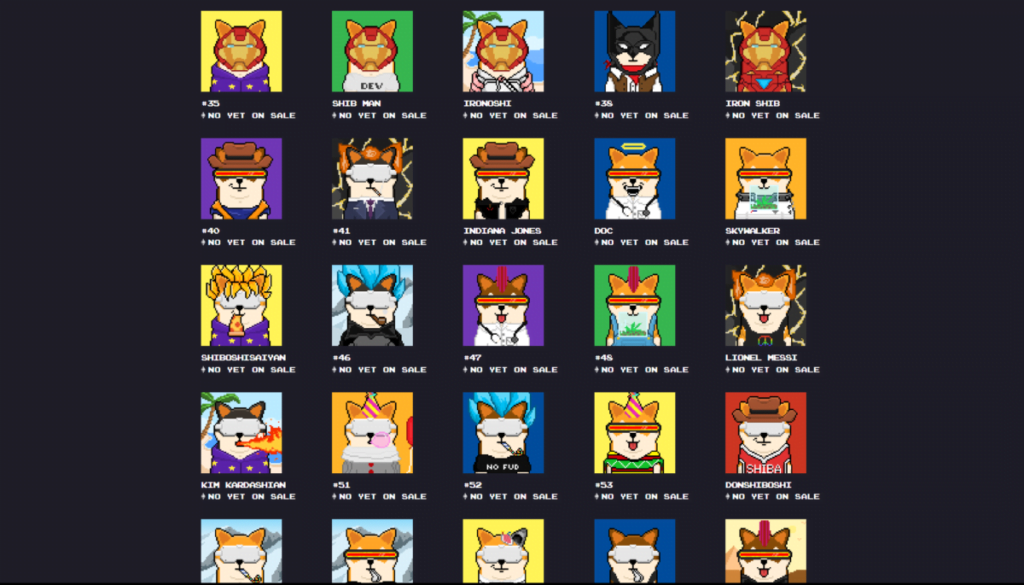Almost everyone in the crypto world has heard of Dogecoin, a cryptocurrency created in reference to the classic Shiba Inu dog meme. In 2020, however, a new memecoin based on the puppy was created, which currently directly rivals its predecessor. It’s the Shiba Inu coins, which quickly gained the symbol becoming one of the most popular cryptocurrencies today.
The Shiba Inu coin was launched specifically to compete with Dogecoin, billing itself as “the assassin of Dogecoin”. Created by an anonymous individual or a group under the name of Ryoshi, Shiba Inu uses a concept very close to its predecessor, but seeking an even greater focus on its community.
Understanding what memecoins are

After the creation of cryptocurrencies, many people did not believe in their usefulness, often stating that they were just a speculative bubble were to burst at any moment. From this, certain groups decided to create tolerant coins in memes to parody the concept of crypto.
This is how, in 2013, Dogecoin was born, the first memecoin, and the best known to date. Initially just a joke, the coin got extreme engagements from the community, making it reach great levels of hero, including several times the support of Elon Musk, former richest man in the world, and current owner of Twitter.
The coin was based on the classic “doge” meme, a Shiba Inu dog nicknamed with a corruption of the English term for dog. By January 2014, the coin had already reached a capitalization of over $60 million, making the power of the meme community clear.
A key driver of memecoins is the supply of massive amounts of tokens on the market at low prices to allow for strong community engagement. In addition, they have a much greater volatility in value than more traditional currencies, as they do not have great practical purposes beyond their parodic principle and community engagement, which often leaves them in the sights of speculation by those who want to multiply your investments quickly.
After Dogecoin, several other memecoins celebrated with the hope of touching the same phenomenon as Dogecoin. However, none managed to come close to repeating such a feat, remaining only in the comical part of being based on memes and funny and peculiar concepts without having a specific function beyond that. That is, of course, until the creation of Shiba Inu coins.
Read more about cryptocurrencies:
- Discover 8 Bitcoin Mining Platforms
- Big companies that accept crypto payments
- What are altcoins and how are they created?
Shiba Inu coins vs Dogecoin
Shiba Inu was born with the definite purpose of being Dogecoin’s first real rival. This is already noticeable in its name, being the name of the dog breed in which Dogecoin had already been inspired. However, Shiba Inu did not want to be just another memecoin that would be quickly forgotten, and for that, it brought an even greater focus on its community, called ShibArmy (Shiba’s army), with an ecosystem developed to support this goal.
In this way, the Shiba Inu coins ecosystem is made up of three main tools. ShibaSwap is a decentralized finance (DeFi) focused exchange for community users to trade their Shiba Inu cryptocurrencies. The Shiba Inu Incubator is an incubator for ShibArmy to express their creativity and develop innovative artistic pieces to be transformed into NFTs. Finally, there are the Shiboshi, which are a collection of 10,000 NFTs generated in the Shiba Inu ecosystem, which can be bought and exchanged on ShibaSwap itself without fees, and also on the main NFT platform, OpenSea.

Shiba Inu coins are also divided into three tokens with different functions. The first is Shiba Inu itself, or SHIB, which is the project’s predominant cryptocurrency, with a total of 1 quadrillion tokens at launch. Of these, 50% (500 trillion) was initially placed on Uniswap for liquidity, while the other 50% was given to the co-founder of the Ethereum network, Vitalik Buterin. In May 2021, he donated over 50 trillion Shiba Inu coins, worth over $1 billion in total at the time, to a COVID-19 relief fund in India. The cryptocurrency works on the ERC-20 standard of the Ethereum network, and can be exchanged for any other coins of the same standard.
The second Token is the Leash, maintaining the dog theme of the cryptocurrency. This token has a supply of 107,646 units, intended to be the low-supply version of the Shiba Inu, as well as rewarding transaction validators. Initially, it served as a “token rebase”, changing the circulating supply to fit the token price. However, the rebase function ended up being disabled, and the Leash started to function normally in the ERC-20 standard as well as the Shiba Inu.
Finally, the third token that is part of Shiba Inu coins is Bone. This is only available on Shiba Inu’s own exchange, ShibaSwap, with a total of 250 million tokens. Its purpose is to be a middle ground between the other two tokens, in addition to serving as a governance token, allowing its holders to vote on decisions about the functioning of the coins.
The fact that Shiba Inu coins work on the Ethereum ERC-20 standard is their main advantage over Dogecoin, as it allows them to interact with various DeFi projects on that network. In the meantime, Doge remains an alternative payment currency only. In addition, the amount of Shiba Inu in circulation is much higher than that of Dogecoin, which favors community engagement.
With this, it is clear that Shiba Inu coins bring several innovations and features that justify the nickname “Dogecoin killer”. Not that its predecessor will really go away, which would be difficult given its popularity, but there is a huge evolution that Shiba Inu coins bring in front of it. Still, we should be hearing a lot about the clash of the top two puppy memecoins over the next few years.
Translated by Laura Bonci






